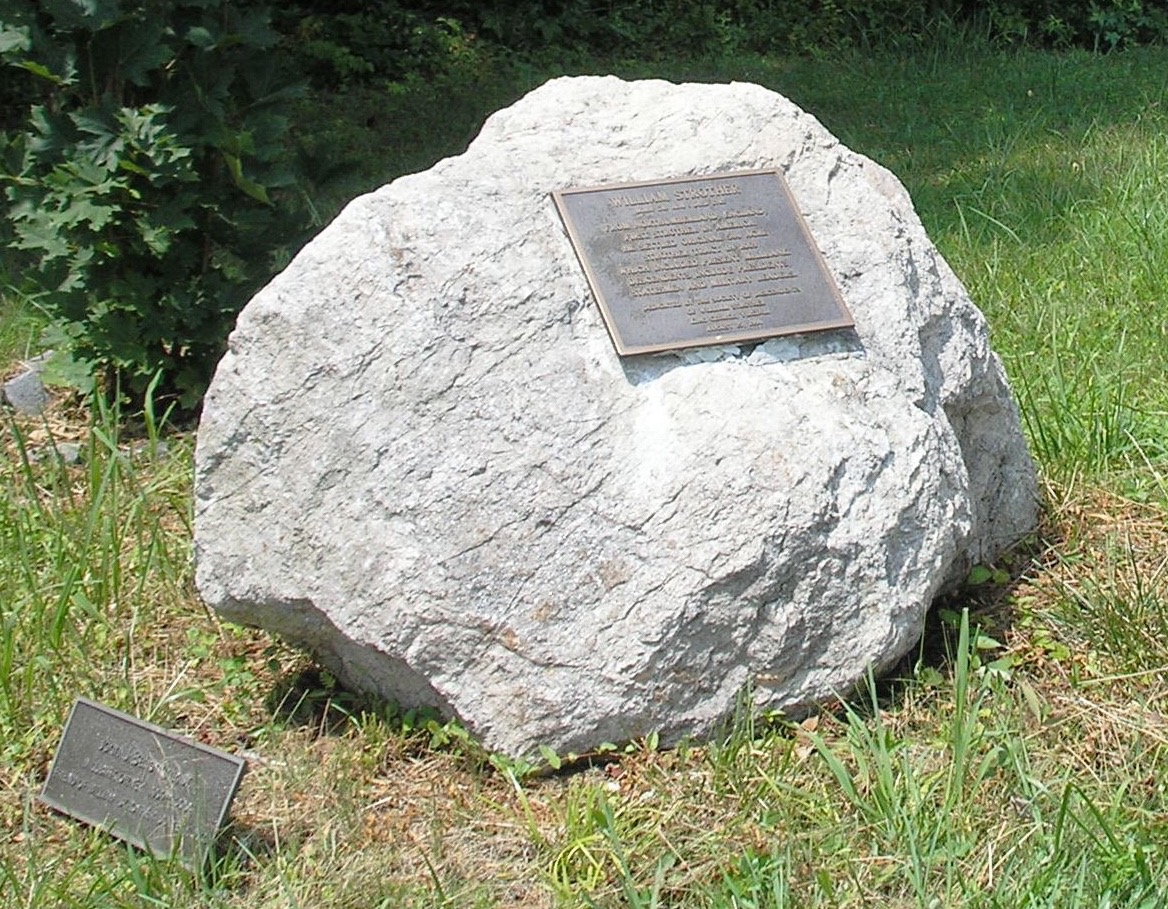William Strother, the immigrant, settled in colonial Virginia in the seventeenth century in Old Rappahannock County (now King George County) near Port Conway. The first actual record pertaining to him is dated 16 October 1669 for the purchase of 500 acres for 75 pounds Sterling (Old Rappahannock County Deed Book 1, 1668-1672). This tract of land was referenced as the 'Strother Tract' and included the present day 'Millbank'. William farmed here, raised cattle and employed indentured servants. His will was probated in 1702 and named his wife Dorothy and six children: William, James, Jeremiah, Robert, Benjamin and Joseph. Five of these sons (James left no descendants) have given us a Strother family of tens of thousands, which includes U.S. presidents, military leaders, judges, legislators and community leaders.
This photo of Millbank was taken in 2010 during our Biennial Conference
Millbank - The "Strother Tract" remained in the Strother family through the lifetime of William, the immigrant, and his son William, who later deeded the land to his son, William (referred to as William III) in 1722. Shortly after William III took over the property, the original manor house burned. He then sold the estate and purchased land further up the Rappahannock River. Here he built a farm which we now know as Ferry Farm. The "Strother Tract" was first sold to the Skinker family, who built a new house around 1725 which is thought to have been named "Millbank". The Skinker family lived there for several generations, but their first manor house was destroyed by fire in about 1800.
Eventually, the property was acquired by Edward Smith and four Strother sisters, descendants of Anthony Strother. The sisters had lived at a neighboring property, Albion, with a brother who died before the move back to the "Strother Tract". Around 1900, the house was again destroyed by fire and another house built on the site. In 1939, the property was purchased by the Ballentine family at public auction.
 In 1990, the William Strother Society dedicated the William Strother Memorial Stone placed just outside the entrance to Millbank (as the property was then known). The plaque on the stone reads "WILLIAM STROTHER ca. 1630-1702 from Northumberland, England first Strother in America. He settled original 500 acre Tract in 1669 which included present Millbank. Descendants include presidents, statesmen and military leaders. Dedicated by the Society of Descendants of William Strother, King George, Virginia, August 25, 1990."
In 1990, the William Strother Society dedicated the William Strother Memorial Stone placed just outside the entrance to Millbank (as the property was then known). The plaque on the stone reads "WILLIAM STROTHER ca. 1630-1702 from Northumberland, England first Strother in America. He settled original 500 acre Tract in 1669 which included present Millbank. Descendants include presidents, statesmen and military leaders. Dedicated by the Society of Descendants of William Strother, King George, Virginia, August 25, 1990."
In 2000, Millbank was purchased by Dr. Gail W. Wertz and Prof. L. Andrew Ball. Together they have restored the Millbank house -- the central, original section of the house follows the original design with a central hallway. Wings added to the house over the years were removed and new wings added to enhance the style and functionality of the restored original section. The attention to detail exhibited by Dr. Wertz and Prof. Ball and their enthusiasm for the historical importance of the house have resulted in Millbank's inclusion in The National Historic Register and The Virginia Landmarks Register. Dr. Wertz and Prof. Ball have also maintained a close association with the William Strother Society and graciously hosted tours of the property during our 2010 and 2018 Biennial Conferences.
Photo of the reconstructed Ferry Farm House facing toward the Rappahannock River - taken in December 2017
Ferry Farm - William Strother (referred to as William III), grandson of William, the immigrant, settled on the banks of the Rappahannock River across from what is now Fredericksburg, Virginia, and built a farm, known as the Strother Farm. Following his death, his widow sold the farm to Augustine Washington, George Washington's father, in 1738 (when George was 6 years old!) and that is where George spent his boyhood years. Legend tells us it was here that George cut down one of his father's favorite cherry trees and tossed a coin across the Rappahannock River. Ferry Farm, as the property is now known, was so named because of the ferry that ran across the river to Fredericksburg and is a U.S. National Historic Landmark. During the Civil War, the farm was used as an encampment site by the Union army, including artillery used to bombard Fredericksburg.
Now owned by the George Washington Foundation, Ferry Farm is a major focus of pride and support for the William Strother Society. The farm house has been reconstructed and was dedicated in October 2017, while archeological digs are ongoing. A new, expanded Visitors Center is in the planning stage. To furnish the house, the Foundation has commissioned reproduction furnishings and invites individuals and groups to sponsor a piece of furniture. Anyone interested in receiving information on this exciting opportunity can e-mail development@gwffoundation.org.
Present Day
The William Strother Society has over 200 members from the United States, England and Europe. We are still working to pin down the origins of William Strother, the Immigrant. The English Ancestry Committee was formed in 1999 to search for the ancestors of William Strother. The Committee began with a DNA study, tracing the Y-chromosome up the male line, and this study continues today. For more information, check the menu item English Ancestry.

